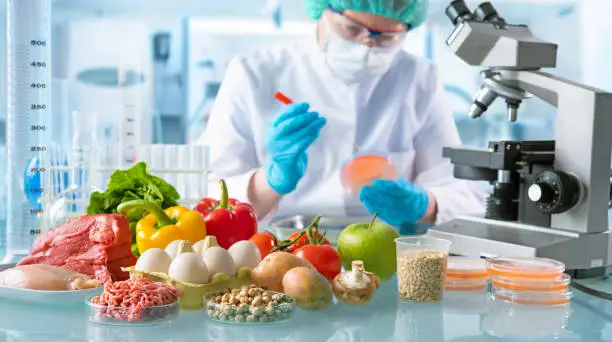Food safety is of paramount importance in a restaurant to ensure the health and well-being of customers. A single instance of foodborne illness can have severe consequences for both patrons and the reputation of the establishment. To uphold high standards of food safety, conducting regular audits is essential. In this article, we will explore the key steps involved in conducting a food safety audit for your restaurant, emphasizing the importance of maintaining a safe and hygienic environment.
Explanation of the Importance of Food Safety in a Restaurant
Due to the possible risks connected with incorrect food handling, storage, and preparation, food safety is essential in a restaurant setting. Customers may suffer and the business may face legal ramifications if foodborne illnesses spread due to contaminated ingredients or poor sanitation procedures. Prioritizing food safety not only protects diners’ health but also fosters customer happiness, fosters trust, and upholds the reputation of the restaurant.
What is a Food Safety Audit?
A food safety audit is a systematic and comprehensive evaluation of the processes and procedures in place to ensure the safe handling and preparation of food. It involves an independent assessment of various aspects, such as storage, cooking temperatures, sanitation practices, employee hygiene, pest control measures, and record-keeping. The audit aims to identify areas of non-compliance with food safety regulations, potential hazards, and areas for improvement.
The significance of performing a food safety audit
Regular food safety audits are crucial for several reasons. First and foremost, audits support ensuring adherence to regional, state, and federal laws governing food safety. Audits allow restaurants to quickly take corrective action and avert any fines or legal troubles by finding areas of non-compliance.
Secondly, audits assist in maintaining consistent adherence to best practices and industry standards. They provide an opportunity to assess the effectiveness of existing food safety protocols and identify areas for improvement. Regular audits also demonstrate a commitment to continuous improvement and a proactive approach to food safety, which can enhance the reputation and credibility of the restaurant.
Lastly, food safety audits help protect the health and well-being of customers. By evaluating critical processes and identifying potential hazards, audits enable restaurants to implement preventive measures, minimize the risk of foodborne illnesses, and ensure a safe dining experience for patrons.
Read more: How to Manage a Multichain Restaurant Business: Tips and Strategies
Preparing for the Audit
Before conducting a food safety audit, certain preparations are necessary to ensure its effectiveness and efficiency.
Understanding the Audit Requirements
Familiarize yourself with the specific requirements of the food safety audit. This includes understanding relevant local, state, and federal regulations governing food safety in your jurisdiction. Additionally, familiarize yourself with any industry-specific standards or guidelines that may apply.
Setting up a Food Safety Team
Assemble a dedicated food safety team responsible for overseeing the audit process. The team should consist of knowledgeable individuals who understand food safety principles, regulations, and best practices. Assign roles and responsibilities to team members to ensure a smooth and thorough audit.
Creating a Checklist for the Audit
Develop a comprehensive checklist that covers all relevant areas of food safety. Include specific items related to storage, handling, cooking temperatures, sanitation, employee hygiene, pest control, and record-keeping. The checklist will serve as a guide during the audit and ensure all essential aspects are evaluated.
Training Employees for the Audit
Provide thorough training to all employees involved in food handling and safety procedures. Ensure they understand the importance of the audit, its objectives, and their responsibilities. Train them on the specific items included in the audit checklist and reinforce the importance of strict adherence to food safety protocols.
Conducting the Audit
The actual audit involves a detailed assessment of various aspects of food safety within the restaurant.
Food Storage and Handling Procedures
Inspect the storage areas to ensure they meet hygiene standards and are organized properly. Check that perishable items are stored at the correct temperatures to prevent spoilage and cross-contamination. Assess the labeling of products to ensure proper identification and rotation. Verify that appropriate measures are in place to prevent pests from accessing stored food.
Cooking and Reheating Temperatures
Verify that cooking and reheating temperatures are consistently monitored and maintained at safe levels to kill bacteria and pathogens. Check the accuracy of thermometers used for temperature monitoring and ensure they are calibrated regularly. Assess cooking practices to ensure food is thoroughly cooked, reducing the risk of foodborne illnesses.
Cleanliness and Sanitation Practices
Evaluate the cleanliness and sanitation practices throughout the restaurant. Inspect food preparation areas, equipment, utensils, and surfaces for cleanliness. Check the availability and use of sanitizing agents, such as cleaning solutions and sanitizing wipes. Assess the effectiveness of cleaning schedules and procedures to ensure that all areas are regularly and thoroughly cleaned.
Employee Hygiene and Personal Protective Equipment
Evaluate employee hygiene practices, including handwashing, use of gloves, and wearing appropriate attire. Verify that employees are following proper handwashing techniques and using gloves when necessary. Assess the availability and use of personal protective equipment (PPE) like hairnets, aprons, and non-slip shoes to minimize the risk of contamination.
Pest Control Measures
Inspect the restaurant for signs of pest infestation, such as droppings, gnaw marks, or nesting materials. Assess the effectiveness of pest control measures, including the use of traps, baits, and regular inspections. Verify that potential entry points, such as cracks or gaps, are sealed to prevent pests from entering the premises.
Documentation and Record-Keeping
Review the restaurant’s documentation and record-keeping practices related to food safety. Ensure that all required permits, licenses, and certifications are up-to-date and easily accessible. Assess the accuracy and completeness of records, such as temperature logs, cleaning schedules, and employee training documentation. Verify that these records are maintained regularly and stored appropriately.
Analyzing the Audit Results
Review the findings of the food safety audit in detail. Identify any instances of non-compliance, deficiencies, or potential risks that were identified during the audit. Take note of both critical and non-critical issues to prioritize improvements.
Identifying Areas of Improvement
Based on the analysis of the audit results, pinpoint specific areas that need improvement. This may include addressing gaps in employee training, enhancing sanitation practices, implementing better pest control measures, or updating equipment and facilities. Prioritize areas that pose the highest risks to food safety and customer health.
Developing an Action Plan to Address the Areas of Improvement
Create a comprehensive action plan to address the identified areas of improvement. Assign responsibilities to team members and establish realistic timelines for implementing the necessary changes. Break down the plan into manageable steps and allocate resources as needed. Regularly monitor progress to ensure the successful implementation of the action plan.
Implementing Changes
Once the action plan is in place, it is crucial to effectively communicate the changes to employees and ensure their understanding and compliance.
Explaining the Changes to the Employees
Inform staff of the necessary modifications identified during the audit by holding meetings or training sessions. Explain the adjustments’ rationale in detail, stressing the significance of food safety and their contribution to the upkeep of a secure environment. Answer any queries or issues brought up by the staff, and promote their active involvement in the implementation procedure.
Training Employees on New Procedures
Employees should get in-depth instruction on the revised processes and procedures. Conduct practical training sessions to make sure that the information is understood and applied correctly. Employees should receive training on things like safe food handling, storage, cooking temperatures, hygienic procedures, and wearing personal protection equipment. To uphold standards for food safety, emphasize the significance of adhering to the new procedures.
Conclusion
All restaurants should prioritize doing routine food safety audits. It makes sure that high standards of food safety and hygiene are maintained, protecting the customers’ health and well-being. Keep in mind that conducting routine food safety audits is a proactive strategy to guarantee that your restaurant’s food safety practices are continually improved. Put food safety first, make the required adjustments, and keep an eye on your progress to keep your restaurant clean and safe.
Know more: Restaurant Management System






